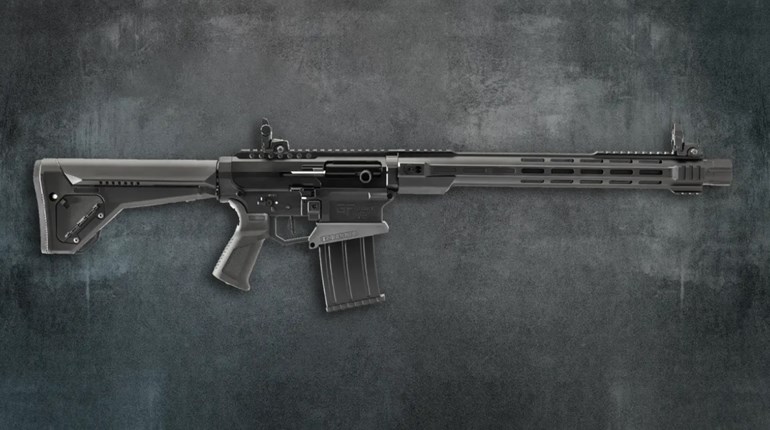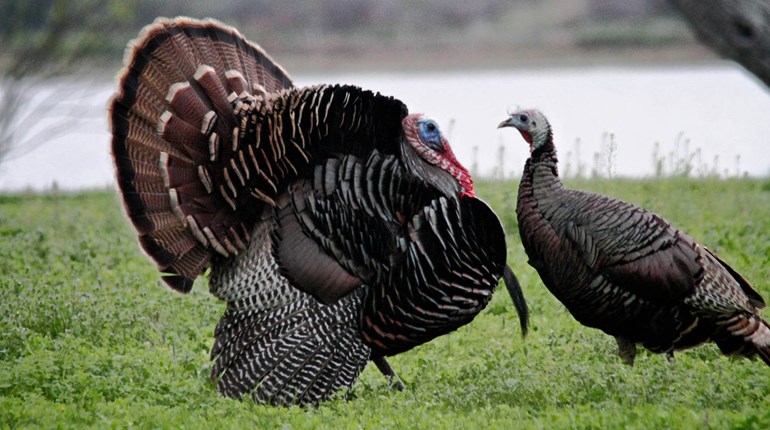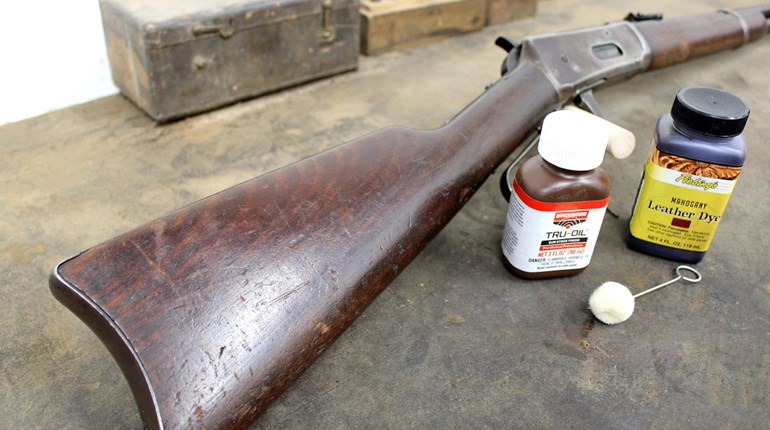
The notion of the turkey gun may not be as deeply rooted in camp lore as the deer rifle, but gobbler junkies are increasingly aware that it sometimes takes more than just any ol' shotgun to send a longbeard to its final roosting place. Differences between a scattergun specifically designed to devastate a big tom and a more generalist model are plenty, and these characteristics can give the turkey hunter an advantage in a game that is severely stilted in favor of the feathered. By souping up its standard semi-automatic Model 11-87 platform to create the Super Magnum SP-T Thumbhole, Remington offers a shotgun decidedly designated for springtime showdowns.
Remington introduced the gas-operated 11-87 action 20 years ago to serve as the Model 1100's big brother. The 12-gauge Super Magnum version can digest the mightiest 3 1/2-inch loads but still function with the tamer stuff, as long as it's not too paltry. A port bleeds a small portion of the propellant gases but ensures enough pressure is retained to cycle the bolt and chamber the next round via a split-ring valve. The system reduces recoil while regulating bolt speed to prevent undue wear. Gone from the Super Magnum is the gas cylinder collar normally found on the 12-gauge 11-87, replaced by a barrel seal activator that nestles between the piston and barrel seal rings on the magazine tube.
Installing the barrel seal activator lets the gun run with 2 3/4-inch ammunition, but Remington says a 3-dram, 1 1/8-ounce load is the lightest that will function reliably in the Super Magnum. The barrel seal activator should be removed when shooting more powerful 3- and 3 1/2-inch loads.
Harnessing the superior firepower offered by magnum payloads is one way the SP-T Thumbhole gives the caller an edge over the called, but it's not the gun's only feature intended to tip the odds toward the hunter. Anyone who has hit—or missed—his share of strutters knows shotguns must be aimed—not hastily pointed—at turkeys. In this regard the properly wielded turkey gun is more like a rifle than a shotgun, and the SP-T Thumbhole borrows a few qualities from its single-projectile brethren to help hunters hit.
Prominent in the gun's profile is a thumbhole buttstock. A high, Monte Carlo-style cheekpiece allows the shooter to look straight down the barrel, where TruGlo rifle-style sights provide a means of precisely directing a cloud of No. 4s toward a gobbler's bulbous head. The rear sight sits on a ramped base ticked with witness marks and is fully adjustable for windage and elevation. Its rather deep, but narrow, U-shaped notch is highlighted by two green, fiber-optic inserts. The red, fiber-optic front sight is dovetailed in place atop a similar ramp. Though the sights are positioned quite high on the barrel, the raised cheekpiece brings the eye in perfect alignment with them, and the fiber-optic rods appear as bright, contrasting dots. A setup like this makes it clear when the proper sight picture is attained and can be tweaked to move a pattern's center, which can vary by load, to point of aim. For those hunters who like to target turkeys with an optic, the gun's receiver is drilled and tapped in four places for a Weaver rail.
Of course, even the best sight system is useless if you can't hold the gun steady when a boss tom is hollering in your face, and there is a strong case to be made for embracing the thumbhole buttstock in this situation. When the thumb engages the circular hollow, its fleshy base is supported by the web of material joining the swelled pistol grip to the rest of the buttstock. This inherent shelf, in conjunction with the grip's steep angle and flared lower portion, lets the shooting hand assume a relaxed, but sturdy, position. Gobblers have a knack for ruining the best-laid plans by approaching from the worst possible angle—usually the strong side—where the second arm and hand awkwardly offer little help in keeping the gun up. The thumbhole design eliminates strain to the shooting hand while allowing it to take a more active part in supporting the gun.
Both the buttstock and fore-end are constructed of laminated wood and, along with the gun's barrel, receiver and magazine cap, cloaked in a Mossy Oak Obsession finish. The camouflaged parts are dipped in a warm ink bath to receive the pattern and then sprayed with a sealant. The result is a durable, matte finish that protects the wood and metal while offering a degree of corrosion resistance. Turkey guns take more of a beating than most sporting shotguns, and mine seem to get wet a good deal of the time, too. It was no different with the SP-T Thumbhole last spring, and the gun looks nearly as good now as it did when I took it out of the box. The buttstock is fitted with an R3 recoil pad, which helps lessen some of the blow dealt to the shoulder by magnum loads, but I was certainly aware of a jolting thump every time I touched off a 3 1/2-incher. A sling comes with the SP-T Thumbhole and attaches neatly to the studs on the buttstock and magazine cap; the latter rotates to eliminate twist.
The SP-T Thumbhole's 23-inch barrel is threaded for the Rem Choke system, and a .665-inch extended, Turkey Super Full tube is included with the gun. Since the choke tube is rated for lead shot only, I patterned Remington's 3 1/2-inch Nitro Turkey loads that deliver 2 ounces of No. 4 shot with a muzzle velocity of 1,300 feet per second. That much lead flying through the air—coupled with a trigger that broke at a little more than 4 pounds and the TruGlo sights—made for lethal patterns on paper out to 50 yards.
Such performance was welcomed when a gobbler hung up at what I later learned was 42 long paces. I wouldn't have taken that shot with just any shotgun, but it appeared to be no problem for the SP-T Thumbhole. The sights found their target, the pellets found their mark, and I found a genuine turkey gun.
The fore-end and buttstock are made from laminated wood, which provides strength and is less expensive to manufacture than synthetic components. An ink dip gives the gun its finish, and a sprayed-on sealant adds durability.






































